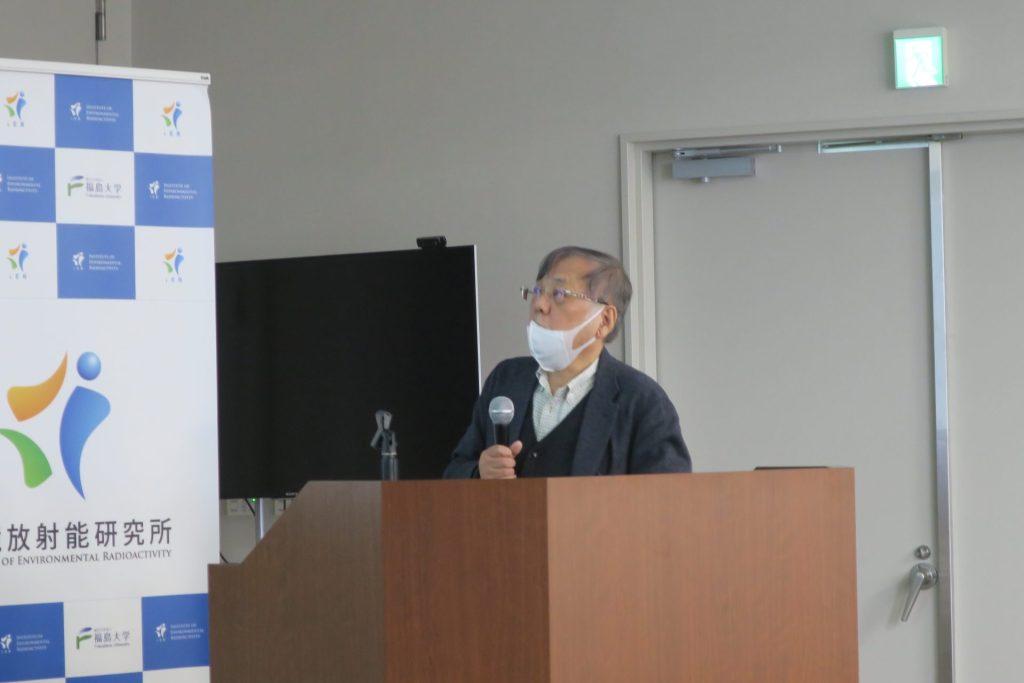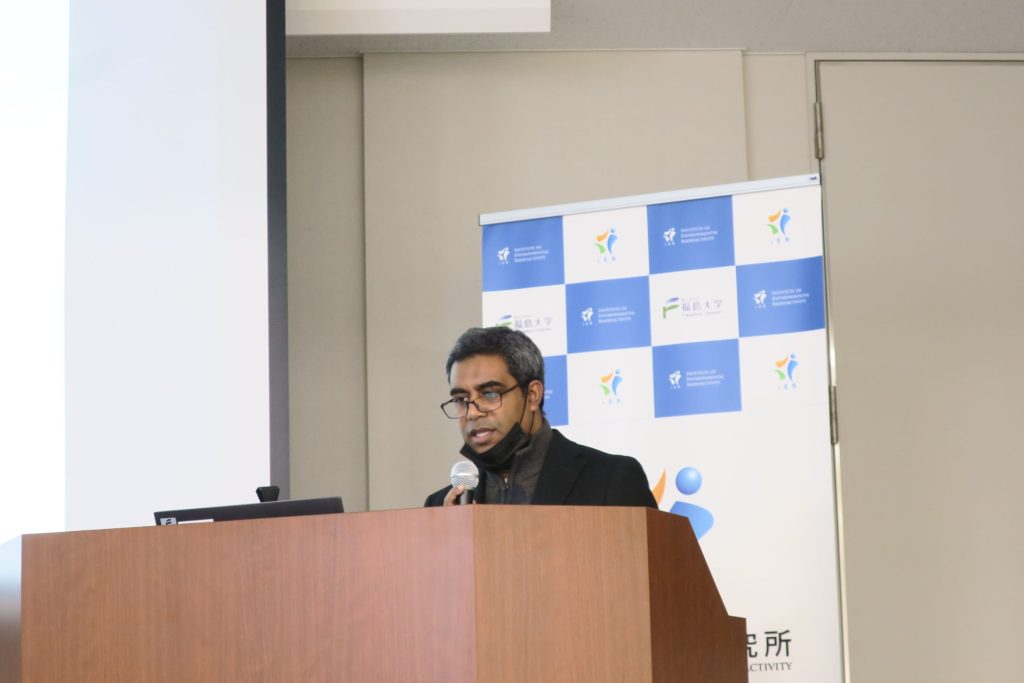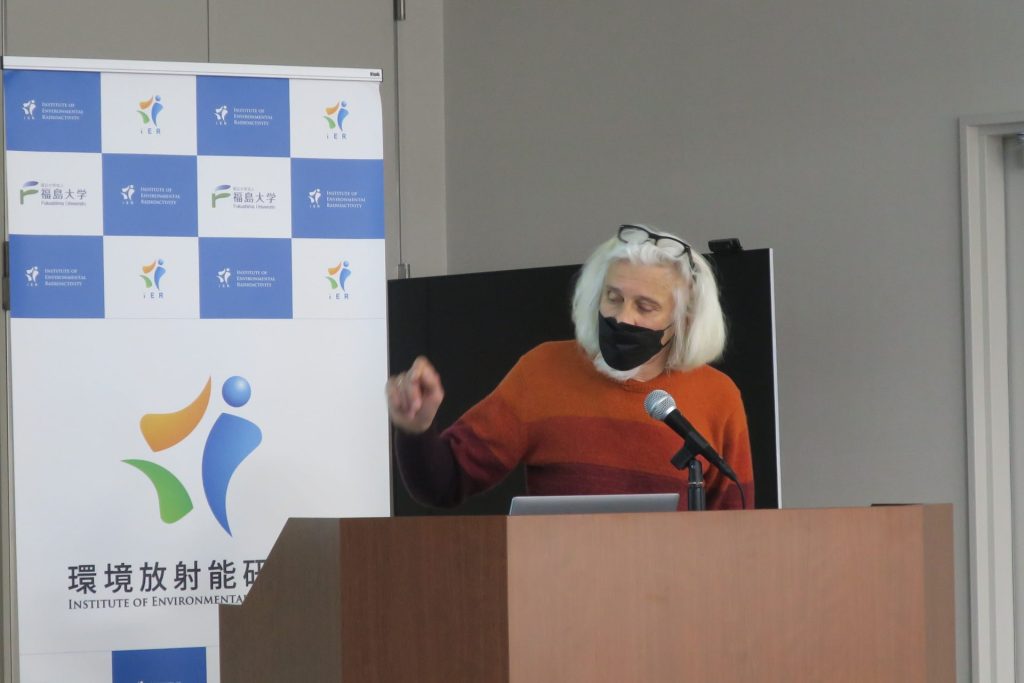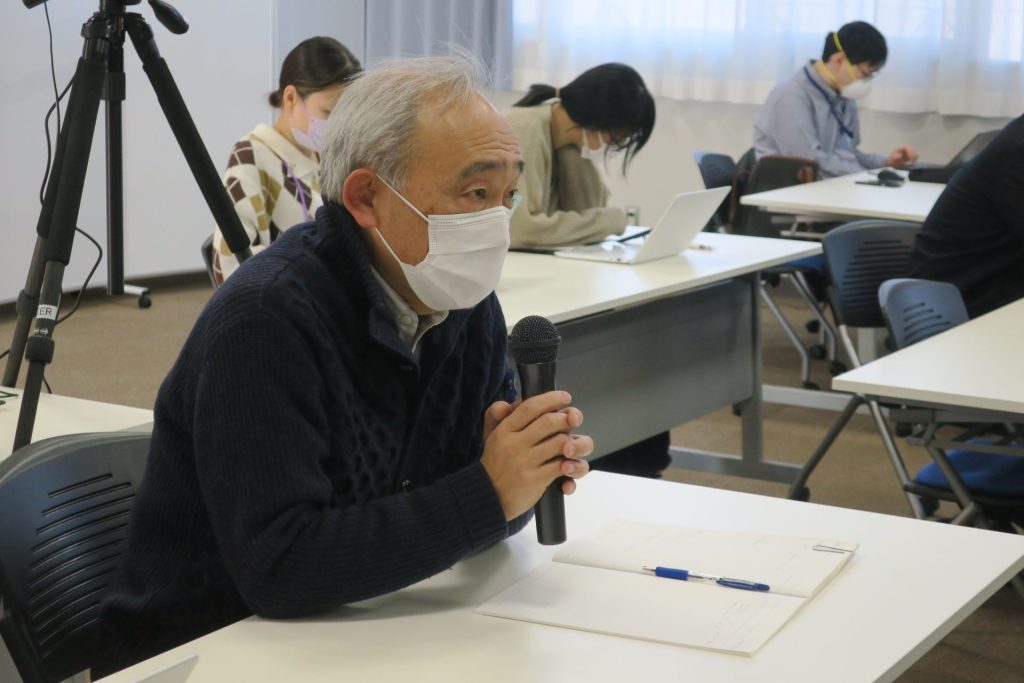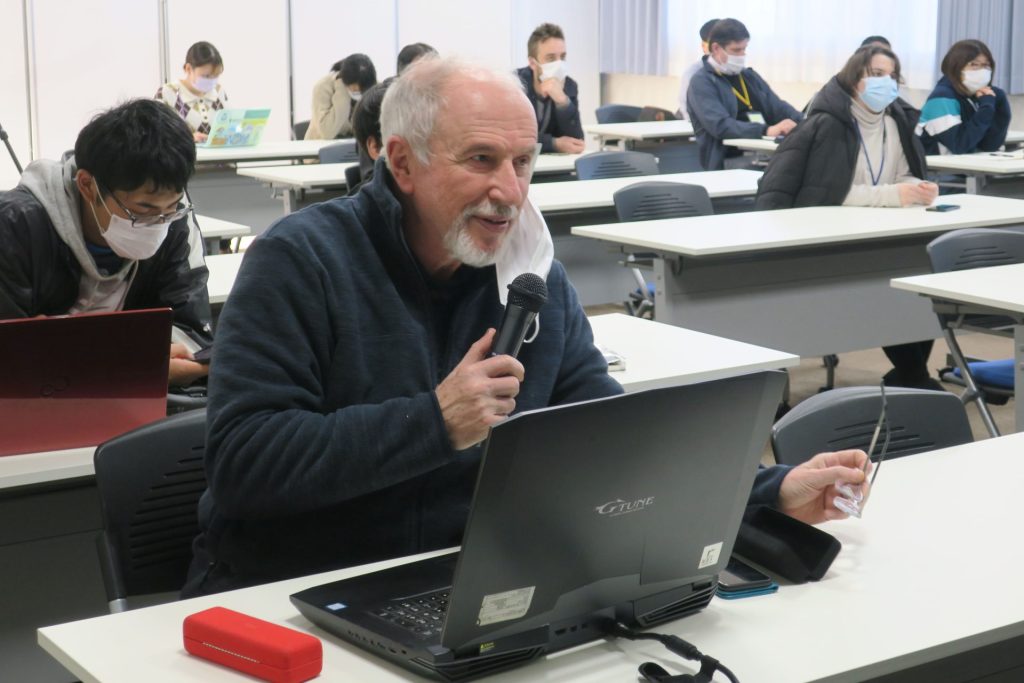December 26, 2022, the 8th IER seminar was held <Project professor TORII, Associate professor RAHMAN, Professor YOSCHENKO>
Date & Time
Monday, December 26, 2022, 14:00~16:00
Speakers
Project professor, TORII Tatsuo
Associate professor, Ismail RAHMAN
Professor, Vasyl YOSCHENKO (Presentation order)
Titles
A New Concept Radiation Imager as a 3rd Gen. Gamma Camera [FRIE Detector] (Torii)
Does open-beach ship-breaking affect the activity concentrations of terrestrial radionuclides in soil ? (Rahman)
Root uptake of radiocesium into conifers in Fukushima forests and radioiodine into crops in field experiments in Chornobyl(Yoschenko)
Institute of Environmental Radioactivity (IER) regularly holds the IER seminar in which the faculty members report on their research results, with the aim of facilitating their research activities and promoting communication. In the 8th IER seminar of this fiscal year that held on December 26, 2022, three researchers gave presentations on their research activities and results. The seminar was attended by 26 researchers and students.
Project Professor Torii presented about the development of a radiation distribution visualization tool based on a new concept. In this context, the radiation measuring instruments with a fractal structure, named FRIE, which provide a three-dimensional distribution of the radiation source, were explained. In the difficult-to-return zone, field measurement tests were carried out to determine the three-dimensional radiation distribution. Currently, he is developing a second unit that can handle on-site measurements, and are aiming for simultaneous all-round beta and γ-ray imaging that can be applied to environmental restoration and decommissioning in Fukushima, as well as various other fields.
Associate Professor Rahman presented the “Effects of open-beach ship-breaking on the activity concentrations of terrestrial radionuclides in soil.” The report shared data from collaborative research conducted with researchers from the University of Chittagong, Bangladesh. The joint research initiative aims to (a) evaluate the spatio-temporal distribution of terrestrial radionuclides in soils and (b) assess potential health risks from terrestrial radionuclides in soils. The research was conducted because the distribution of natural radionuclides and radiation levels in the environment is essential for assessing the effects of radiation exposure on human beings due to terrestrial and extra-terrestrial sources. Therefore, the spatio-temporal distribution of U-238, Th-232, and K-40 activity concentrations in soils exposed to open-beach ship-breaking activity was evaluated, and potential health risks were assessed. The report concludes that open-beach ship-breaking does not increase the activity concentrations of terrestrial radionuclides in soil. In contrast, a suppressing impact can be assumed.
Professor Yoschenko presented recently published results of studies on root uptake of radiocesium into conifers in Fukushima forests and radioiodine into crops in field experiments in Chornobyl. Both studies indicate a significant dependence of the uptake of these radionuclides on the content of exchangeable forms of competing ions in the soil, potassium and stable iodine, respectively. The results of current studies of the variability of radionuclide concentrations in wood at the stand scale in Chornobyl and Fukushima and effect of tree age on the radial distributions of 90Sr and 137Cs in pine and birch trees in the Chornobyl Exclusion Zone were also discussed.
After each presentation, IER faculty members gave the presenters various questions and comments.
